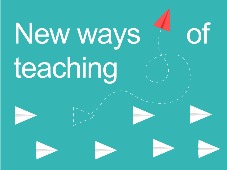University of Groningen Implements VR Glasses to Enhance Classroom Management Skills for Pupils
In New Ways of Teaching, lecturers share their innovative, creative, and effective educational initiatives. From unusual teaching methods to new technologies — anything is possible. How do these ideas arise, and what impact do they have on students? This month: learning class management with the help of VR glasses
As a teacher in training, how do you make sure that you possess the right class management strategies? And how do you practise this in a challenging school situation, when everything you do has consequences for the pupils in your class? That is not always easy because as a student at a placement school, you cannot put the class on hold and then just start anew. Ricus Dullaert, Marjon Fokkens-Bruinsma, and Anina Westgeest of the Teacher Training department of the Faculty of Behavioural and Social Sciences believe they have found a solution: VR glasses, something that was already used by Jolien Mouw for kindergarten classes. Ricus Dullaert explains how the idea came about and its application.
From start to pilot
Within the Teacher Training department, we used NPO resources to develop VR software for practising class management in a virtual learning environment, similar to the VR software for kindergarten classes developed by Jolien Mouw. So far, the first version of the software has been developed, and we are busy with a pilot and looking for students who want to help us test it. Our goal is to offer this as an element within one of the course units of the Teacher Training programme. Where in the curriculum and for which students: that is something that we hope the pilot will clarify. One of our ideas is to have students practise during micro-teaching sessions, in which they prepare parts of a lesson, and can then test them with the VR glasses.
Right in the middle of a classroom
As soon as students put on the VR glasses, they find themselves in a secondary school classroom. The instructor can activate various behaviours among the pupils: talking to their neighbour, staring out of the window, putting in their ear buds, etc. The student has to first register this behaviour — eye-tracking allows us to see where a student is looking — and then decide how to deal with it.
We can also roll out specific scenarios: a bee in the classroom, pupils who increasingly laugh more and make more noise, an ambulance driving past. Here too, students have to show how they redirect the class’ attention back to the lesson. After the session, the student can talk to other students and to their supervisor, to discuss what strategies they applied, and whether they were the most effective. If necessary, you can run the scenario again.
The lesson does not wait
Within the Teacher Training programme, we have a number of options for practising class management: at the University, in micro-teaching sessions; sometimes, we deploy student actors. But mostly, students practise at their placement school. The advantage of the latter is that you are dealing with real pupils, but that is also the disadvantage: the lesson does not wait, and during your placement you are responsible for your pupils’ learning process. You cannot simply pause the class, or try out different strategies. Another advantage of the VR software is that it is available at the Faculty of Behavioural and Social Sciences, and can be deployed flexibly.

